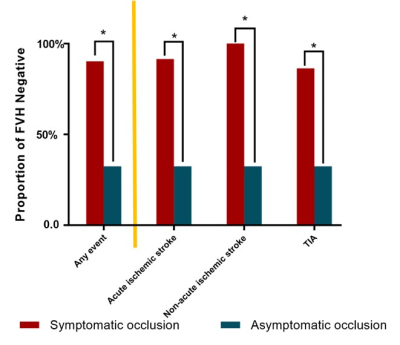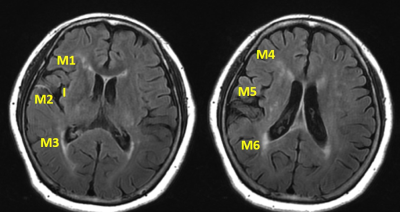Jinhao Lyu1, Mengting Wei1, Xiangbing Bian1, Liuxian Wang1, Senhao Zhang1, Lin Ma1, and Xin Lou1
1Radiology, Chinese PLA General Hospital, The First Medical Center, Beijing, China
1Radiology, Chinese PLA General Hospital, The First Medical Center, Beijing, China
The presence of Fluid-Attenuated
Inversion Recovery vascular hyperintensity (FVH) is able to discriminate symptomatic
patients from asymptomatic patients in intracranial internal carotid artery or
middle cerebral artery occlusion.

